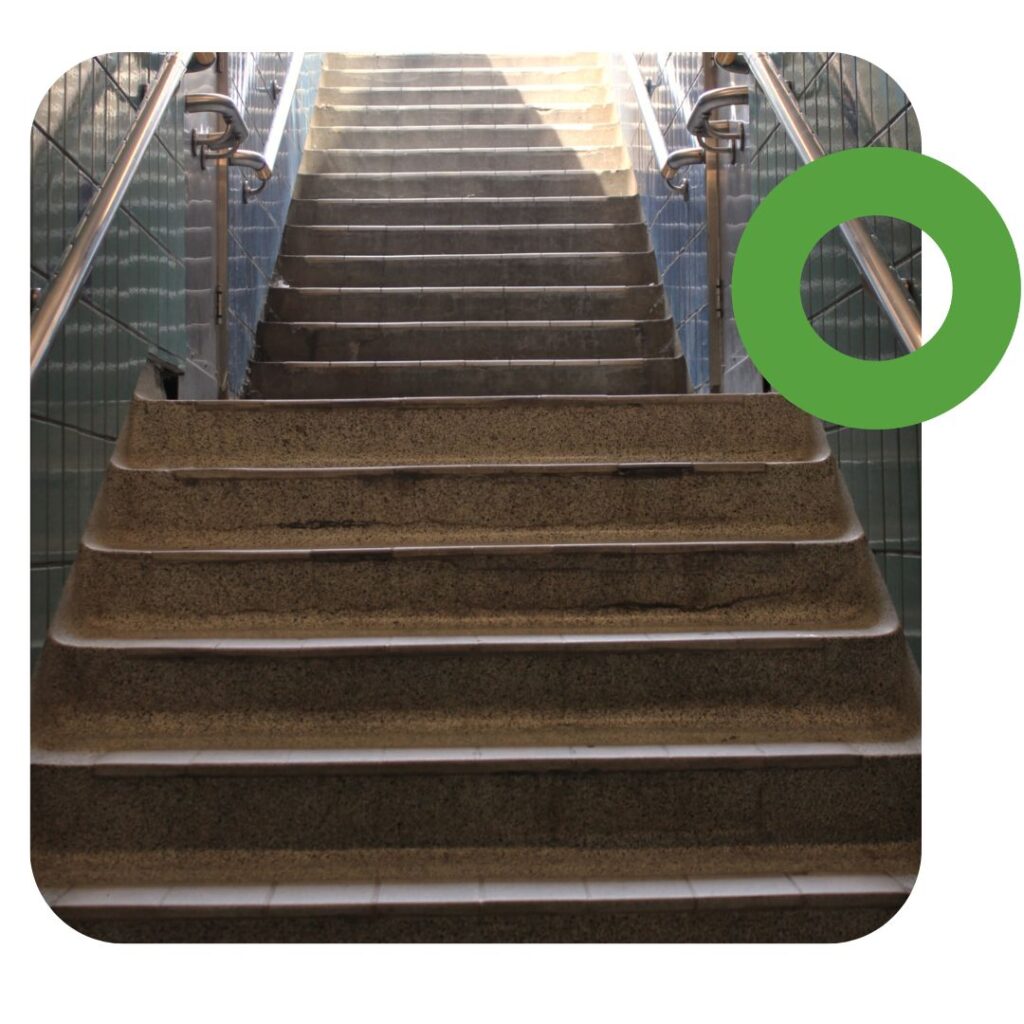Egress from Subway Systems
As transit and subway systems evolve, it is crucial to address the impacts of fatigue in egress planning.
Addressing Vertical Travel Challenges
Transit station egress, particularly in subway systems, presents unique challenges compared to conventional buildings. Unlike traditional buildings, which typically require evacuation in a downward direction, subway stations often involve egress in the upward direction with large numbers of people. This upward travel introduces a significant fatigue factor, which can affect evacuation speed and safety. Despite the growing recognition of these challenges, the Ontario Building Code (OBC) does not yet address fatigue and the National Fire Protection Association (NFPA) standard, NFPA 130, “Standard for Fixed Guideway Transit and Passenger Rail Systems,” has only begun to address these issues as a recommendation.
The Impact of Increased Vertical Travel on Pedestrian Behavior
When subway stations require extended vertical travel, the behavior of pedestrians during egress can be influenced by individual stamina levels. David Galvao, Senior Project Manager notes that, “Not all evacuees can maintain the same pace during a prolonged ascent, which can lead to congestion and delays. Individuals may need to stop periodically to rest, especially in high-stress situations such as an evacuation. These stops can create bottlenecks, reducing the overall speed of evacuation.”

The Gaps in Existing Codes: OBC and NFPA 130
The Ontario Building Code (OBC) does not specifically address the fatigue associated with ascending egress routes in subway stations. Section 3.13 of the OBC requires that station egress be evaluated based on a timed egress analysis, but it applies a uniform vertical travel speed and flow rate for stairs and ramps. This could be problematic as it does not account for the varying degrees of fatigue experienced by evacuees as they ascend over long vertical distances.
While NFPA 130 has introduced strategies to mitigate fatigue in deep stations in its Annex material, it does not offer prescriptive requirements. The 2014 edition of NFPA 130 introduced a recommendation to reduce vertical travel speeds and flow rates by approximately 30% for stations with more than 15 metres of vertical rise. However, this strategy remains a recommendation rather than a mandate.
Not all evacuees can maintain the same pace during a prolonged ascent, which can lead to congestion and delays. Individuals may need to stop periodically to rest, especially in high-stress situations such as an evacuation. These stops can create bottlenecks, reducing the overall speed of evacuation.
Mitigating the Effects of Fatigue
Recognizing the impact of fatigue on subway station egress, several strategies can be implemented to improve safety and evacuation efficiency in deep stations:
1. Reduced Vertical Travel Speeds and Flow Rates:
To account for fatigue, it is advisable to reduce the vertical travel speeds and flow rates by 30%, where appropriate, when conducting egress analyses for stations with vertical rises exceeding 15 metres. This adjustment allows for a more realistic assessment of the time it takes for evacuees to ascend and ensures that the effects of fatigue are considered in emergency planning.
2. Increased Stair Width:
Wider stairs can help alleviate congestion, allowing evacuees to pass those who need to rest or slow down. Wider stairways provide more space for movement, which is crucial during emergency evacuations when every second counts.
3. Larger Landings:
Adding more substantial landing areas within enclosed exit stairs gives evacuees a safe place to pause and recover if needed. These resting areas are essential to prevent exhaustion from hindering the evacuation process. With larger landings, evacuees can regroup, catch their breath, and continue their ascent without impeding other evacuees.
Conclusion
As subway systems continue to expand and evolve, especially with deeper stations requiring greater upward travel, it is prudent to address the impacts of fatigue in egress planning. In the absence of prescriptive requirements of current building codes and standards, including the OBC and NFPA 130, an egress strategy that addresses fatigue needs to be established at the onset of the project. “The effects of fatigue have been considered on several transit projects on which LRI participated as the code consultant” maintains David Galvao. By incorporating strategies such as applying reduced vertical travel speeds and flow rates for egress analyses, increasing stair width, and providing larger landings, transit authorities can better prepare for emergency evacuations and ensure the safety of passengers during potentially life-threatening situations. The adoption of these strategies, grounded in internationally recognized standards, will help mitigate the impacts of fatigue in deep subway stations and improve overall evacuation performance.
Senior Associate
